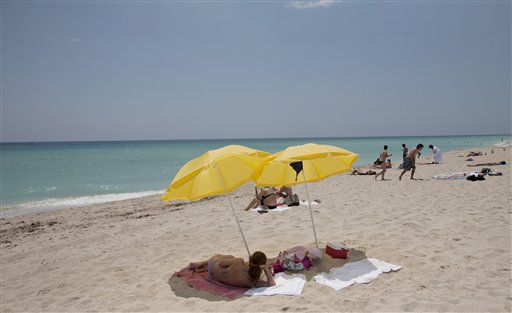WASHINGTON — What’s your SPF number? Most dermatologists recommend using sunscreen with a sun protection factor of at least 30. But for the fourth year running, Consumer Reports found that sunscreens don’t perform as advertised, and that can open the door to skin damage.
After testing more than 60 sunscreen products — lotions, sprays and sticks — with SPF 30 or higher, their study found that 43 percent of the products did not live up to their label. And chemical sunscreens performed much better than their mineral or “natural” counterparts.
“It’s absolutely flabbergasting, because right now you’re trying to get in good shape, people are getting ready for summer, getting the perfect swimsuit … you go to the drugstore to get a sunscreen, you expect what’s on a label to be the protection you’re going to get,” Dr. George Verghese, a dermatologist and director of the Mid-Atlantic Skin medical practice in Waldorf, Maryland, told WTOP.
And with skin cancer as the most common form of cancer in the United States according to the Centers for Disease Control and Prevention, having the right SPF is a must.
The Food and Drug Administration does not test sunscreens. Dr. Verghese hopes that may change.
“I think there should be more oversight into testing sunscreens, because right now it requires the manufacturers to test their products,” he said. “But in some cases, they don’t even have to submit their results. But definitely, there has to be a little more of an evaluation process by the FDA in testing these sunscreens.”
So how can we better protect our skin from the sun?
“If you’re going out for a long period of time, [have] two to four ounces of full body protection and you may need to even reapply in two to four hours, depending on how long you’re going to be out,” Dr. Verghese advised. “But at least [SPF] 40 and preferably a chemical as opposed to mineral, right now.”







